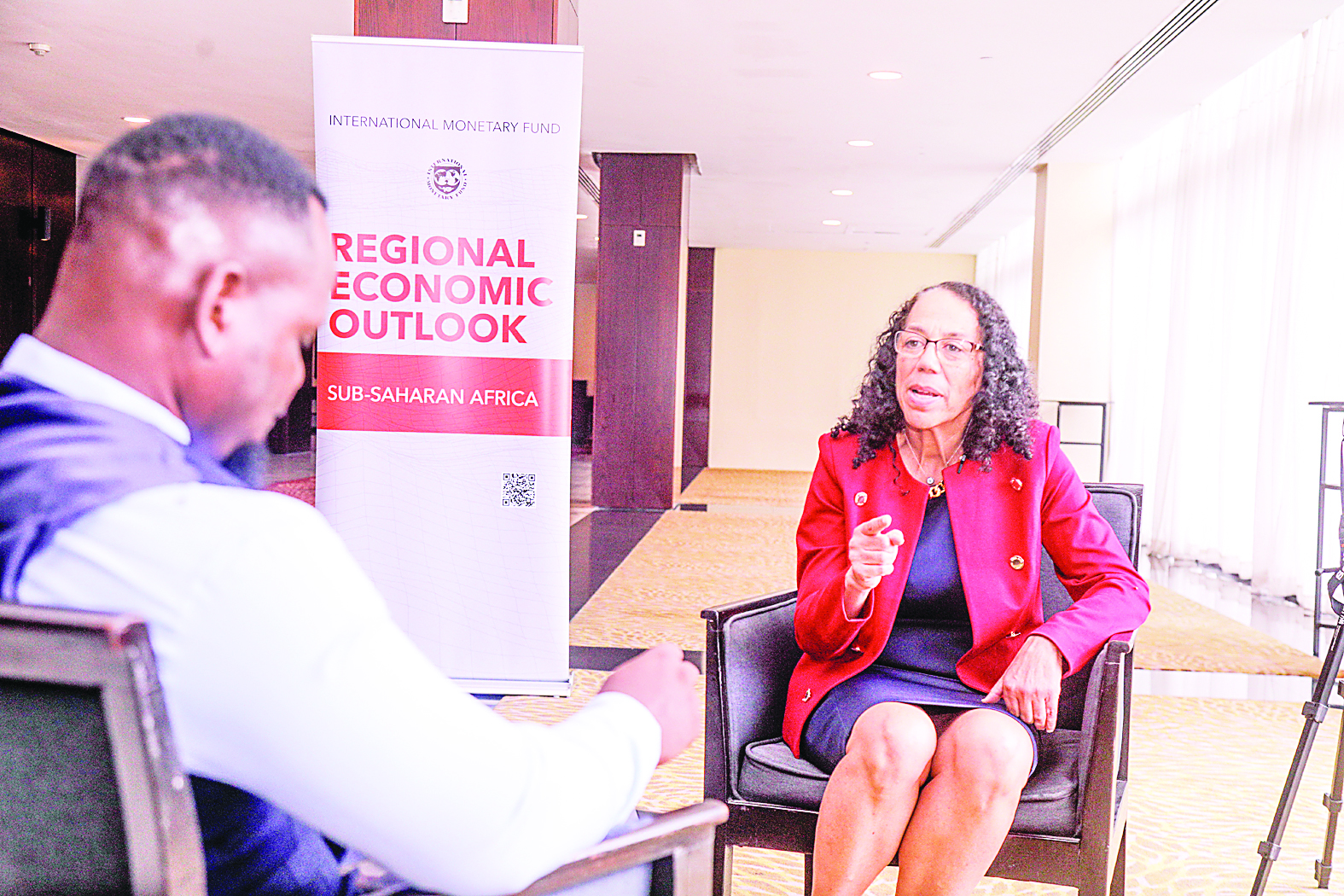Prime
IMF: Africa’s growth strong, but debt costs a concern

IMF deputy director for Africa Catherine Pattillo during her exclusive interview with The Citizen managing editor Mpoki Thomson in Dar es Salaam recently. PHOTO | SUNDAY GEORGE
What you need to know:
- IMF Deputy Director for Africa Catherine Pattillo talks about the rising cost of borrowing across Africa and what steps need to be taken to address it
In an exclusive interview, IMF Deputy Director for Africa Catherine Pattillo talks about the rising cost of borrowing across Africa and what steps need to be taken to address it. The conversation hosted by The Citizen Managing Editor Mpoki Thomsonalso sheds light on the growing role of gold as an alternative reserve asset for central banks, and why there is a pressing need to rethink the implementation of debt-funded mega infrastructure projects.
Concerns persist that international credit rating agencies assign unfair or biased ratings to African countries, leading to higher borrowing costs and hindering development efforts. What steps is the IMF taking to address these concerns and promote more equitable assessments?
There’s significant interest around rising borrowing costs, especially during periods when international financial conditions tighten. In sub-Saharan Africa, bond spreads are increasing amid current global economic turbulence, and we’ve observed that these spreads tend to rise disproportionately during times of market stress. Even with similar credit ratings, African countries often face higher borrowing costs than peers. This highlights three key priorities: the importance of strong economic fundamentals, transparency—especially around reserves and debt—and the IMF’s role in helping countries borrow countercyclically when markets are unfavourable.
A deeper issue is the steep increase in the weighted average cost of financing for African countries in recent years. This is driven by factors like the end of the low-interest-rate era, a shift toward commercial and less concessional borrowing, and the overall high cost of debt.
Although ideas like blended finance have been proposed, they haven’t yet delivered the intended reduction in financing costs. As such, the IMF, World Bank, and other partners are actively seeking interim solutions. These include enhanced debt management and operations to help countries shift away from high-interest, short-maturity loans.
Could establishing an African credit rating agency help solve the challenge?
It’s a complex issue. If pursued, it would need to be implemented properly—ensuring credibility, transparency, and reliable information. This process takes time. If done well, an African agency could provide valuable independent assessments from within the region. However, it’s also important to note that borrowing costs are influenced by more than just credit ratings.
Africa is not seeing returns on its mega infrastructure investments that are proportional to the costs, leading to a widening fiscal gap. As many emerging market economies continue to borrow heavily for such projects, should the focus now shift toward easing the debt burden rather than pursuing new borrowing?
Most of the infrastructure projects pursued by African countries have been beneficial, resulting in gains such as increased access to electricity, improved transportation, and better port infrastructure. In many cases, however, the returns take time to materialize. What has been lacking is the effective capture of these returns through domestic tax systems.
Going forward, there needs to be greater emphasis on domestic revenue mobilization. This would allow governments to sustainably manage tight financial conditions without relying excessively on further borrowing.
Central banks are increasing their gold reserves amid concerns over the declining dominance of the US dollar and a push for diversification. Could gold eventually replace the US dollar as the world’s primary reserve asset.? What would be the implications of this shift for the global economy — and specifically for sub-Saharan Africa?
Globally, governments decide which currencies and assets to hold for international transactions and reserves. While the international monetary and reserve system has been evolving, the US dollar’s share in global reserves has gradually declined over the past two decades—indicating some diversification by central banks. Still, gold remains a relatively small portion of global reserves.
The US dollar retains its dominance as the world’s principal reserve currency due to America’s deep, liquid financial markets and strong institutions. These features underpin its central role in trade, finance, and as a store of value. We don’t foresee a major shift away from these roles in the near term.
For sub-Saharan African central banks—especially those in gold-producing countries—gold can be a strategic part of reserve assets. However, diversification in reserve composition remains prudent.
With Africa showing some resilience against external shocks and a projected GDP growth of 3.8 percent in 2025 and 4.2 percent in 2026, is the continent finally poised to realize its economic potential?
Our report notes that Africa had been on the path of a hard-won economic recovery, but this has recently been tested by global shifts. Consequently, we’ve revised our growth forecasts for sub-Saharan Africa downward for this year and next.
Despite these setbacks, the region has shown remarkable resilience—11 of the world’s 20 fastest-growing economies are in Africa. Going forward, sustaining this momentum will require greater agility, policy consistency, caution, and credibility. These will be critical for unlocking and realizing the region’s immense economic potential.




